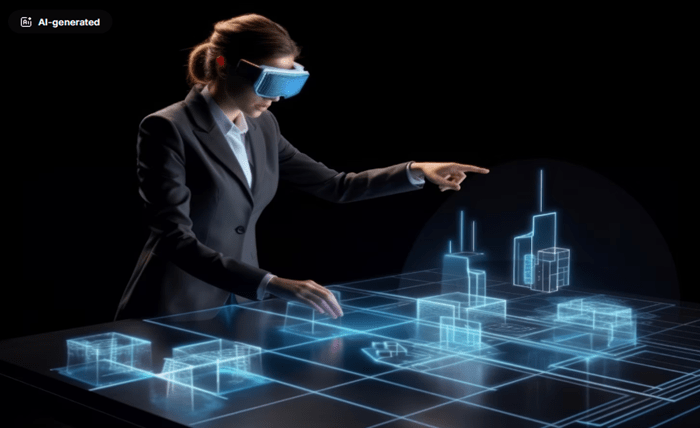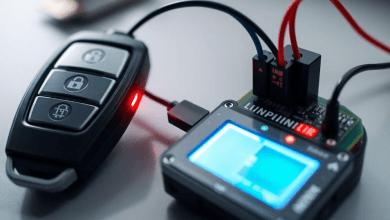
Smart buildings are no longer a futuristic ideal. Across cities and campuses, intelligent systems already manage HVAC, lighting, and access control, optimizing resources while improving tenant experiences. But there is one critical area where many buildings are still playing catch-up: the mailroom.
With the explosion of e-commerce, deliveries are flooding residential complexes, commercial buildings, and student housing in volumes never seen before. Property managers now face a logistical challenge that is far from minor. Managing hundreds, sometimes thousands, of daily deliveries requires more than storage space. It requires infrastructure that is scalable, trackable, and efficient.
“In the age of smart buildings, delivery operations can’t remain analog.”
Forward-looking building operators are responding with tools and processes designed specifically for high-volume delivery environments. Many are turning to scalable digital systems like parcel management software to automate intake, notify recipients, and reduce pressure on front desk staff.
The Rise of the Mailroom as a Service Zone
The mailroom was once a simple drop-off point. Now, it is becoming a critical service touchpoint for residents and tenants. As buildings evolve into dynamic service ecosystems, delivery logistics are being pulled into the spotlight. A lost or delayed parcel can impact tenant satisfaction, staff productivity, and even lease renewals in competitive markets.
Smart buildings are recognizing this and investing in technology to streamline parcel flow. That includes everything from contactless pickup lockers to fully integrated tracking systems that log items, send alerts, and verify collection. These systems provide transparency and efficiency at a time when both are in high demand.
Data-Driven Delivery Management
Operational teams today are under pressure to do more with less. Managing deliveries manually is not just inefficient. It creates a growing risk of error, theft, and lost productivity.
Here is a simple comparison of how manual and digital mailroom operations stack up:
| Workflow Area | Manual Handling | Digital System |
| Parcel logging | Paper logbooks or spreadsheets | Barcode scanning and automatic entry |
| Recipient notification | Phone calls or emails | Instant SMS or email alerts |
| Pickup verification | Verbal confirmation or signature sheets | Digital signature or scan-to-collect |
| Time per package | 2–5 minutes | Under 30 seconds |
When multiplied by hundreds of parcels per week, the time and labor cost difference is significant. Automated systems not only improve operational efficiency but also create audit trails and accountability, reducing disputes and liability.
“A smart delivery system isn’t just about saving time. It’s about building trust through transparency.”
Turning a Growing Problem Into a Competitive Edge
Property managers often find themselves on the defensive when it comes to deliveries, responding to complaints, tracking down lost packages, or managing cluttered storage areas. But forward-thinking operators are flipping the script. By transforming delivery handling into a smooth, service-led experience, they are turning what was once a pain point into a differentiator.
A well-organized, tech-supported mailroom signals operational excellence. It shows tenants that their time and belongings are respected and that the property is keeping pace with modern living. It also frees staff to focus on higher-value work, such as tenant engagement, maintenance coordination, and amenity management.
Choosing the Right Tools for the Job
Not all properties face the same delivery challenges. A luxury high-rise might require concierge-level coordination for pickups. A student housing complex may receive bulk deliveries during move-in season. Office buildings must support multiple companies with different mailroom needs.
This is where adaptable tools come into play. Using mailroom management automation allows building teams to customize workflows, automate notifications, and monitor collection patterns. These insights can be used to adjust staffing, allocate storage space, or plan for peak delivery periods without increasing friction.
Deliveries as an Extension of the Brand
As smart buildings continue to blur the lines between hospitality, tech, and real estate, every touchpoint matters. Mailroom operations, once considered back-of-house logistics, are becoming an extension of the building’s brand. Clean workflows, prompt notifications, and secure handling all contribute to the overall perception of quality and care.
This is particularly important in buildings competing for residents, tenants, or high-value commercial contracts. The ability to handle deliveries with precision can quietly tip the scales in favor of properties that understand the details.
“In high-density living and working environments, good delivery management is the new front-desk hospitality.”
Preparing for the Future of Urban Logistics
Delivery volumes are not going down. With the rise of same-day services, meal kits, and remote-work equipment, even mid-sized buildings are seeing logistics demands once reserved for fulfillment centers.
Property operations must be ready for this continued growth. Integrating delivery solutions into smart building infrastructure is no longer optional. It is a core aspect of managing modern real estate.
For property managers, facilities directors, and building tech leaders, the goal is not just to manage packages. It is to create delivery experiences that reflect the same care and innovation found in every other smart system in the building.
Because when the building is smart, the deliveries should be too.




